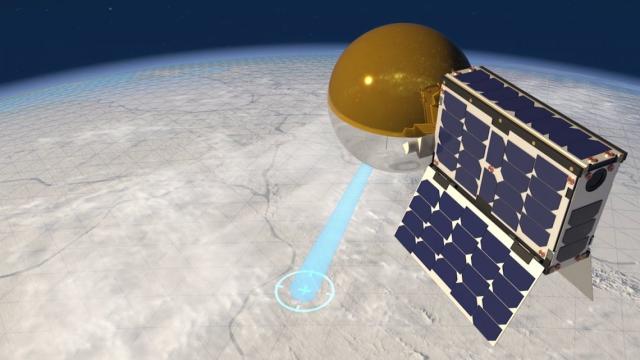In an attempt to optimise communication in space across vast distances, a team of researchers from the University of Arizona will rely on a unique antenna for CatSat, a small satellite that will study the ionosphere. The antenna resembles a space-age beachball that can beam information to Earth at high speeds.
The inflatable antenna is actually the brainchild of Freefall Aerospace, a space startup in Tucson that spun off from the University of Arizona’s Tech Launch Arizona. The antenna folds into CatSat until it’s ready to be deployed, during which reserves of helium and argon gas fill it up. The researchers are planning to pack the antenna onto CatSat, a student-designed cubesat from the University of Arizona. The cubesat is roughly the size of a cereal box and it’s designed to collect data on how radio waves warp as they encounter the ionosphere.
“This technology could drive down the cost of high-quality scientific measurements in space by enabling the use of lightweight, low-cost antennas with very high data rates,” said Aman Chandra, a University of Arizona PhD student studying mechanical engineering, in a press release.
The inflatable sphere features one clear half and an aluminium-coated half that’s designed to reflect data back to Earth, including some high resolution images of the planet. The inflatable antenna, which can transmit data almost instantaneously due to its large surface area, is a leap in cubesat communications, since previous cubesats have had to carry small antennas that can take days to transmit data, according to the press release.
CatSat will study how radio signals interact with the ionosphere using a smaller, 0.61 m-long antenna on the opposite side of the satellite that will receive transmissions from amateur sources on Earth. The student researchers that built CatSat want to test how the density of the ionosphere fluctuates, since these fluctuations can affect radio transmissions used in GPS, for example. CatSat will listen to radio frequencies using its smaller antenna and researchers on the ground will compare the transmissions heard in space to those heard on the ground to try and identify trends in the ionosphere’s density.
“The ionosphere’s density changes between night and day as radiation from the sun affects the density of its charged particles,” Chandra said in the press release. “By listening to the strength of radio signals in the high-frequency range, we can estimate how the density of the ionosphere changes over time.”
CatSat currently has no set launch date, but the University of Arizona says it’ll eventually launch from Vandenburg Space Force Base in California aboard a Firefly Alpha rocket from space transport company Firefly Aerospace. Once in space, CatSat will operate in Sun-synchronous orbit and perched 547 kilometres above the planet.
More: Florida Startup Moves Closer to Building Data Centres on the Moon
